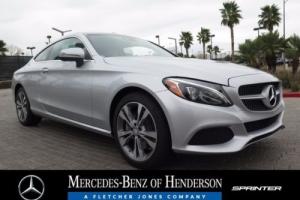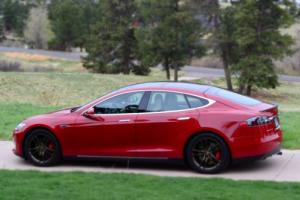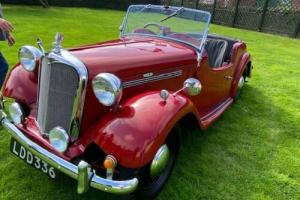Classic Cars in UK / / Car for sale
1951 Singer 4AB Roadster 4 Seater Complete Restoration to Concourse Condition
Sale price: £16,500.00 make an offer
Car location: Bristol, United Kingdom
Sale type: Fixed price listing
Technical specifications, photos and description:
- Got questions?
- Ask here!
1951 Singer 4AB Roadster 4 Seater Complete Restoration to Concourse Condition for sale
Current customer rating:Roadster tune
Bantam Singer NineOverviewManufacturerSinger Motors LimitedLayoutConfigurationinline four[1][4]Displacement1074 cc[1]Cylinder bore60[4]Piston stroke95[1]Block materialiron, 2 main bearings[4]Head materialdetachable[4] compression ratio 6.9:1[1]Valvetrainoverhead camshaft and valves[4]CombustionFuel systemdowndraught S.U. carburettor,[1] electric fuel pump on dashboard[4]Oil systemforced[4]Cooling systemnatural circulation[4]OutputPower output36 @ 5,000 rpm[1] Tax 8.93HP[4]ChronologyPredecessorSinger NineSuccessornoneThe original Roadster was an occasional four-seat, two-door tourer, mostly based on the Bantam saloon with a cheery character. It had Singer's overhead camshaft, 1074 cc inline-four engine used in the Bantam range but tuned slightly to give 36 hp (27 kW) at 5000 rpm by fitting a high efficiency "hot-spot" manifold and downdraught SU carburettor, as well as having slightly higher compression.[5] For 1940 sliding glass panels replaced the celluloid in the sidescreens along with other equipment improvements. A chromed front bumper was now standard as were twin aero screens for use when the windscreen was folded flat to reduce frontal area. A fitted suitcase was supplied to take full advantage of the usable space in the luggage compartment.[5] Performance was handicapped by the use of the Bantam's three speed gearbox and top speed was in the order of 65 mph (105 km/h).
Advertising copy incorporated "from the inspiration of the Le Mans model" though the Singer sports-racing link remained deliberately muted after the death of 8 spectators in September 1936's RAC Tourist Trophy on Ireland's Ards Circuit, the Ulster TT. In that era the TT was a handicap and won by either MG or Riley. Unlike the Le Mans the Roadster was designed and built so it could be sold at a moderate price.
The makers claimed a top speed of 70 mph (110 km/h) and acceleration: 0 to 30 mph (48 km/h) in 6 seconds and 0 to 50 mph (80 km/h) in 18 seconds. Standard equipment included a spring steering wheel, concealed spare wheel, 12-volt electrical system and windscreen wipers.[6]
The body was built in the traditional method of aluminium panels fixed to a wooden framework. The suspension used leaf springs and was non independent with rigid axles front and rear. The brakes were mechanically operated.
The successful Roadster re-appeared following the war, in 1946, with these modifications: non-lubricated rubber shackle bushes, improved seating accommodation provided by moving the engine forward and an improved lid at the rear of the body providing a flat platform for luggage.[7] These changes seem to have improved the handling.[5] Better engine mounts and other isolations were introduced, providing a smoother ride and lessening maintenance. Cars began to filter out to the dealers in September 1946.[8] Nearly all post war production was exported the car being popular with the Elite in India and featured in the collections of a few Maharaja's.
PrewarFor 1946 the engine was moved forward leaving more passenger spacePostwarSinger 9 Roadster series 4A 1949-1950[edit]9 Roadsterseries 4A9 Roadster series 4A 1950OverviewProduction1949-19504122 made[2]PowertrainEngine1074 cc I4Transmission4-speed manualChronologyPredecessorSinger 9 RoadsterSuccessorSinger 9 Roadster series 4ABSinger 9 Roadster series 4ACsee belowThe Roadster was updated to the 1950 4A model in September 1949 by fitting the four speed gearbox from the Singer Hunter. A Solex carburettor replaced the SU used on the previous car, adding one extra horsepower.[9] The driving position was also improved, with easier entry and egress, and the Nine Roadster's awkward gearchange was ameliorated as the gearbox was moved back.[9] The bumpers on the 4A are slightly larger, stronger, and rounded towards the tips.
Singer 9 Roadster series 4AB and 4AC 1950-1953[edit]9 Roadsterseries 4AB and 4AC9 Roadster series 4ABregistered May 1952 1074 ccOverviewProductionOctober 1950-January 19531000 approx made[2]PowertrainEngine1074 or 1194 cc SOHC I4Transmission4-speed manualChronologyPredecessorSinger 9 Roadster series 4ASuccessornone. Singer SM Roadsterremained in productionBy October 1950 the further improved 4AB Roadster appeared. While superficially similar, this has an independent front suspension by coil springs and a hybrid, "hydro-mechanical" brake system by Girling. Externally, there is a shortened bonnet and disc wheels, as well as fixed sides to the bonnet. The fenders were also redesigned, becoming curvier and deeper.[10] The steering box also received alterations, mainly aimed at centering it in the chassis so as to simplify manufacturing alternately right-hand or left-hand driven examples. The 4AB continued in production alongside the larger 4AD until January 1953.
The prototype 4AC (built in about a dozen examples) used a slightly larger 1194 cc engine. This was a down-sleeved version of the 1.5 litre version as fitted to the Singer SM1500, and part of an attempt rationalize Singer's lineup.[11]
registered January 1951 1074 ccSinger SM Roadster series 4AD 1½-litre 1951-1955Also published at eBay.co.uk
Want to buy this car?
Comments and questions to the seller:
Other classic cars offered via internet auctions:
 price: $50,315.002017 Mercedes-Benz C-Class C 300 Coupe
price: $50,315.002017 Mercedes-Benz C-Class C 300 Coupe price: $91,500.002016 Tesla Model S Ludicrous
price: $91,500.002016 Tesla Model S Ludicrous price: $US $15,000.001970 Chevrolet Other Pickups Stepside
price: $US $15,000.001970 Chevrolet Other Pickups Stepside price: $54,800.002016 Jaguar XF S AWD
price: $54,800.002016 Jaguar XF S AWD
Latest arrivals:
-
£5,950.000
-
£6,900.000
-
£39,995.000
-
£30,000.000
-
£22,750.000
-
£24,995.000
-
£9,995.000
-
£24,995.000
-
£8,995.000
-
£26,995.000
-
£19,995.000
-
£46,000.000
-
£39,750.000
-
£22,990.000
-
£22,500.000
-
£6,895.000
-
£7,495.000
-
£16,995.000
-
£7,990.000









































